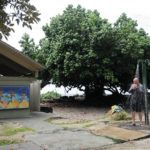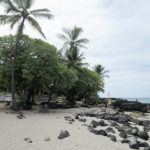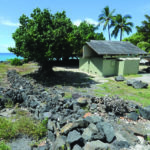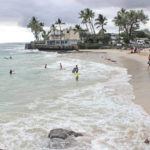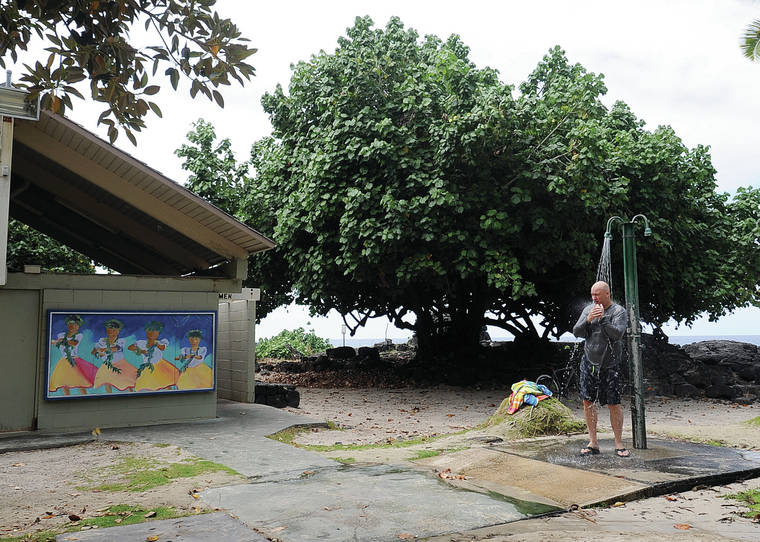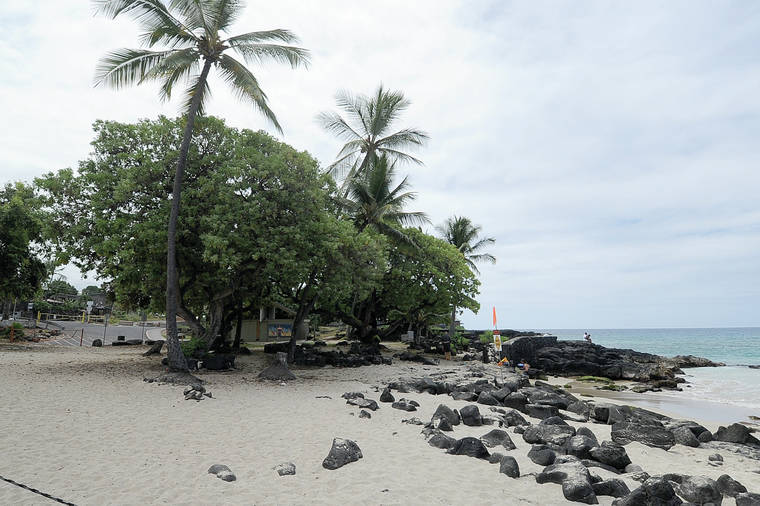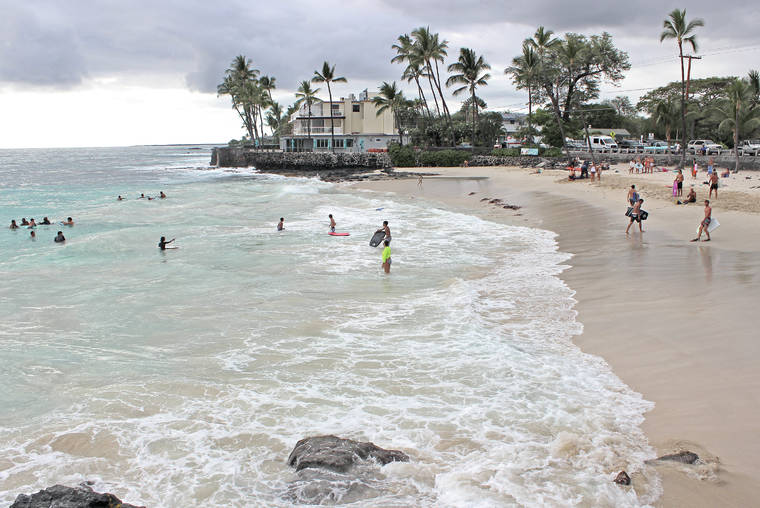Accessibility improvements for Laaloa Beach Park, also known as Magic Sands Beach Park, are one step closer to reality.
Hawaii County concluded in its final environmental assessment (EA) published July 23 that the work will have no significant impact, despite concerns raised by the public about removal of several trees and the continued positioning of the comfort station near culturally significant places.
The Department of Parks and Recreation is looking to demolish the current comfort station and replace it with an American with Disabilities Act compliant facility, as well as add ADA-compliant parking. In addition, the proposal calls for new accessible showers; accessible picnic table and barbecue grill; and accessible walkways and ramps connecting the park to Alii Drive and a nearby bus stop.
Also included are related and necessary replacements/improvements to drain sumps, sand interceptors, utility tie-ins and waterlines, pavement reconstruction and restriping, as well as removal of several trees, including two banyans.
The final EA added that one coconut tree will also have to be moved to make way for the ramp and walkway.
“Three new native trees approved for shoreline areas will be planted in this project site, and a large number of new native trees, shrubs and herbs will be planted on the Laaloa property just to the south as part of a separate project, more than compensating for the loss of these three trees,” the final EA reads.
A number of commenters on the draft EA stated their opposition to the removal of the trees. Several noted the ficus’ removal might impact carbon dioxide uptake, global warming and oxygen supply, as well as local temperatures and air toxins removal.
“Removal of just two trees, especially in the context of planing many other trees, shrubs and herbs here and next door at Laaloa negates any such impact,” the final EA reads, noting that the site is home to more than 30 banyan, hau and coconut trees.
Several commenters took issue with the continued positioning of a comfort station, calling it “culturally offensive” to keep the facility near culturally significant sites, including the iwi aina stone wall, ku‘ula fishing shrine and punawai (spring).
“I don’t think this is an appropriate place for the comfort station, besides the fact its too close to the Ku‘ula site and the springs, I don’t think it should be that close to the ocean with the run off from shower and restroom grey water,” wrote Malia Kipapa, a lineal descendant of the area.
The county said in the final EA that relocation of the comfort station was “studied in detail.” While noting a comfort station in that location would be beneficial and will be considered in the future as funding allows, the mauka site in Kipapa Park doesn’t meet purpose and need of this project.
“If the comfort station and shower facilities were entirely limited to the mauka side of Alii Drive, all park users would be required to cross Alii Drive to utilize them. This would exacerbate conflicts between pedestrians and vehicles that already exist and might ultimately lead to injuries,” county noted in the final EA.
It was also noted that if built in the mauka site, the comfort station would be in a flood zone. Further, there is no other “buildable” area within the project site.
“In the interest of public health and safety, the comfort station/shower complex is planned to remain essentially on and just slightly mauka, of its current footprint,” the county wrote in the document.
The facility’s footprint, however, will be reduced and the number of fixtures decreased.
“The outdoor shower has been moved to the inside of the building and covered to mitigate any shower water running off to the beach/ocean. Although it is acknowledged that the comfort station and other recreational facilities
are near the punawai and the reconstructed iwi aina stone wall, the county feels that these elements can be protected through proper construction buffers and public education,” the final EA reads.
The county said it is still awaiting the State Historic Preservation Division’s review of an archaeological assessment survey submitted June 29 before it can seek a special management area permit.
Still no project timeline has been provided, however, the final EA states that shortly after completion of the environmental work and necessary permits are obtained, construction will begin. Work is expected to take about a year.
The improvements are estimated to cost $930,000.
Despite the ongoing COVID-19 pandemic, the department said in the final EA that it has a policy of “continuing to advance projects through pre-construction regulatory review and approval processes.”
